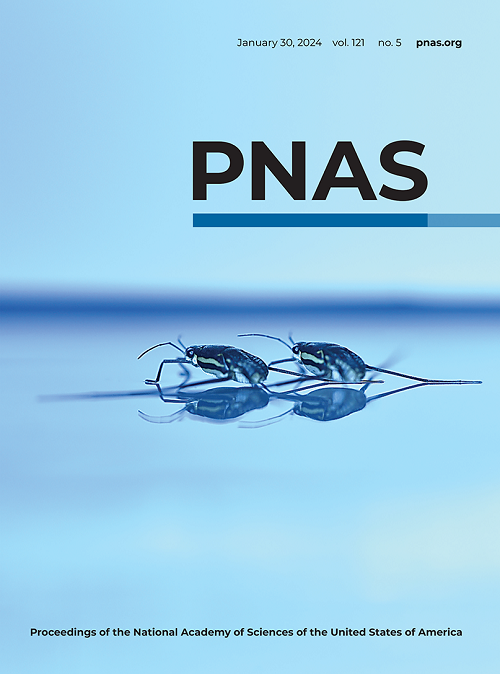Agouti and BMP signaling drive a naturally occurring fate conversion of melanophores to leucophores in zebrafish
IF 9.4
1区 综合性期刊
Q1 MULTIDISCIPLINARY SCIENCES
Proceedings of the National Academy of Sciences of the United States of America
Pub Date : 2025-02-18
DOI:10.1073/pnas.2424180122
引用次数: 0
Abstract
The often-distinctive pigment patterns of vertebrates are varied in form and function and depend on several types of pigment cells derived from embryonic neural crest or latent stem cells of neural crest origin. These cells and the patterns they produce have been useful for uncovering features of differentiation and morphogenesis that underlie adult phenotypes, and they offer opportunities to discover how patterns and the cell types themselves have diversified. In zebrafish, a body pattern of stripes arises by self-organizing interactions among three types of pigment cells. Yet these fish also exhibit white ornamentation on their fins that depends on the transdifferentiation of black melanophores to white cells, “melanoleucophores.” To identify mechanisms underlying this conversion we used ultrastructural, transcriptomic, mutational, and other approaches. We show that melanophore–melanoleucophore transition depends on regional BMP signals transduced through noncanonical receptors (Rgmb-Neo1a-Lrig2) as well as BMP-dependent signaling by Agouti genes,求助全文
约1分钟内获得全文
求助全文
来源期刊
CiteScore
19.00
自引率
0.90%
发文量
3575
审稿时长
2.5 months
期刊介绍:
The Proceedings of the National Academy of Sciences (PNAS), a peer-reviewed journal of the National Academy of Sciences (NAS), serves as an authoritative source for high-impact, original research across the biological, physical, and social sciences. With a global scope, the journal welcomes submissions from researchers worldwide, making it an inclusive platform for advancing scientific knowledge.

 求助内容:
求助内容: 应助结果提醒方式:
应助结果提醒方式:


